The Notorious Umbrella Assassination of Georgi Markov: Upon Further Investigation

"In The Cause Of Freedom?"
In early 1978, Georgi Markov began receiving death threats over the telephone. It would be the last threat made to Georgi, in August of 1978, that would leave him deeply bothered. This call was different from all of the others.
It was the tone and emphasis of the voice on the other end of the phone, that would leave Markov, a husband, father, political dissident, writer and a voice against communism on the BBC radio, shaken to his very core.
"Not this time," said the cold, calculated voice on the phone. "This time you will not become a martyr. You will simply die of natural causes. You will be killed by a poison that the West cannot detect nor treat." To ensure that Markov fully understood, he repeated the murder threat.
Within two weeks of this phone call, 49 year old Georgi Markov would die in a London hospital from what doctors had originally thought was a form of blood poisoning. Leaving behind a bizarre murder mystery, with one of the most unlikely of murder weapons. This is a story that not even Agatha Christie could have ever dreamed up; and one that still has Scotland Yard racing to find the answers too.
This is the true story of the assassination of Georgi Markov...
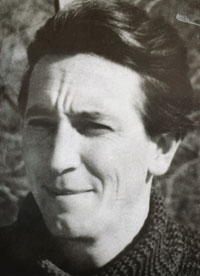
An Unnatural Cause
Before he died, Markov was able to tell the police, doctors, and days earlier; Georgi told his BBC colleagues, about the incident at the bus station. How he had felt a stinging pain in his thigh and that a rather heavy looking man with a thick foreign voice said, "he was sorry."
The thought of Markov's cold-blooded killer, acting in broad daylight with scores of people all around him with an unlikely murder weapon, an umbrella, shocked British intelligence. But there lay 49 year old Georgi Markov, dead. The original diagnosis was death caused by "Septicemia, a form of blood poisoning caused by bacterial infection, possibly a result of kidney failure".
Some newspaper in London carried the story of Georgi Markov's death as front page news. Scotland Yard, which had been told of the death threats on made on Georgi's life, began an immediate forensic investigation into his death.
An autopsy was performed at Wandsworth Public Mortuary on September 12, 1978. The doctors found Markov's lungs were full of fluid, which coincides with heart failure, his liver was damaged due to blood poisoning. Markov's intestines, lymph nodes, and heart were riddled with small hemorrhages, and his white blood cell count was shockingly high. Because Georgi told so many people, including the authorities, about the pimple- sized mark on his right thigh from the strange umbrella incident at the bus stop at the Waterloo Bridge. During the autopsy of his body, a 2mm diameter block of tissue with the puncture wound was extracted.
The examiners found a tiny metal pinhead inside the wound. When they attempted to extract the "pin." A tiny 1.52mm wide metal pellet fell on the table. The pellet was believed to be a jeweler's watch bearing, like the kind used in precision watchmaking. The police took the pellet to the Chemical and Micro-biological Warfare Establishment at Porton Down, also known as the "Germ Warfare Center".
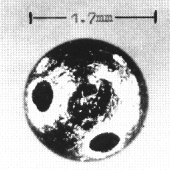
A Bearing On The Case?
There at the " Germ Warfare Center", a team of the England's top forensic medicine specialists, and, reportedly, Dr. Christopher Green of the CIA ( Central Intelligence Agency - U.S.A. ), examined the pellet. Metallurgical analysis discovered that the bearing was made from platium and iridium, both of these alloies are extremely hard, and are biologically inert. Which means that the pellet wouldn't cause a reaction from the body's immune system.
Even stranger, were that two tiny holes, each unimaginably measuring .34mm in diameter. Both holes had been drilled at right angles to each other, forming an "X" shaped well inside the pellet. Because the metals used in making the pellet were so hard, more than likely so the bearing would not distort on impact with the body, it was concluded that they were drilled, mind you this is in 1978, by using a high-tech laser in a process called "spark erosion."
The forenics specialists calculated that the pellet held roughly one-fifth of a milligram of whatever it was that had killed Georgi Markov. They also concluded that to keep the substance inside the pellet, it may have been coated with something like a wax, that would melt from human body temperature, which is 98.6° F/ 37°C. There was no residue of any substance left on the pellet that killed Markov. But... what if there was a second identical "death pellet?" One that was pulled out of the back of another exiled Bulgarian, only 10 days before Georgi was attacked?
Vladimir Kostov had repoted being stung with something in August 1978, while waiting at a Paris Metro Station. Kostov came down with a high fever and was hospitalized, all though Vladimir was ill for quite sometime. He did survive. It is believed that two factors saved Kostov's life. First the KGB had used a modified case of some sort that didn't have a strong enough delivery system (and believed to be not used at point-blank rage), and secondly, He had been protected at the time of the attack by a heavy sweater, he was wearing. The sweater may have gave enough resistance to prevent complete penetration of the deadly pellet. After the discovery found in Markov's death, scientists and some members of the British Anti- Terror squad learned of the Vladimir Kostov attempt and re-examined the wound on his back. A pellet with a wax-coating was discovered.
As a side note: Later it was confirmed, that technicians for the Soviet KGB had developed a modified umbrella, by turning it into a syringe, that could deliver the pellet. Originally, the KGB had tried use a briefcase that didn't use a syringe technique as the delivery weapon.
The pellet removed from Georgi Markov contained no trace of the poison that killed him, neither were there any trace evidence, recoverd from his body. Investigator were now relying on "the process of elimination," and deduction. Concidering many possible toxins, such as tetnus, diphtheria, dioxin, and various nerve agents. One of the early contenders was a natural toxin made from the seeds of the castor bean plant. The toxins name is ricin.
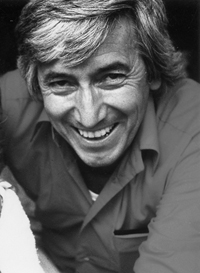
What Is Ricin?
The castor bean plant (Ricinus communis) is a widely used to make castor oil. It is an attractive, rapid growing ornamental vine. Ricin is the waste product in the manufacturing of castor oil.
Ricin consists of two toxic elements. One toxin penetrates the cells the body and creates a kind of a passage way for the second toxin. The second toxin attacks the cell's ability to produce proteins. Since protein is the building block of life...no protein...the cell dies. Once the poison has access to the blood stream, ricin's deadly effect have carte blanche to spread throughout the infected person's body.
Unlike nerve gas, like sarin which is a neurotoxin, which can kill within minutes, ricin poisoning is a slow, sinister, painful death; that masks itself as an illness... like say...a high fever.
Other tell-tale signs that led investigators to believe that Markov died from ricin poisoning were the symptoms of a high white blood cell count, damage to the lymph nodes and the hemorrhaging of internal organs. Let's not forget a sore at the site of infection from the poison. All these matched perfectly with Georgi Markov's symptoms.
To confirm that ricin was involved, the scientists injected a pig with the poison. True to form, for six hours the test subject was fine. Then it came, the animal had a high fever and then an elevated white cell count. In 24 hours the pig had died. An autopsy showed the same internal damage that Markov had.
Ricin jumped out a head of the rest of the pack, for another reason. Intelligence agents knew that the Soviet Union for decades were researching ricin for the use of chemical warfare.
Medical doctor and forensic expert working for the CIA, who had studied the pellet, at the time of the Markov case, Christopher C. Green says, "racin was at the top of my list of two or three possibilities, from the outset of the investigation."
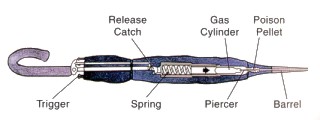
Putting Together A Case
Investigators and Scientist came to the conclusion in the death of Georgi Markov. Though there was no concrete evidence. Forensic experts built a strong circumstantial case.
They believed it was an "umbrella gun" that shot the deadly pellet. It was a modified umbrella, that may have contained a cylinder of compressed air that fired the pellet through the "barrel", after activating the trigger, located in the handle of the umbrella. The development of the case was made even stronger by the inclusion of other pieces of information:
- Markov's account of the incident. Including after he was struck with the pellet, he saw a man pick up a dropped umbrella. The man apologized to Markov and spoke with a foreign accent. The man also hailed for a taxi, while everyone was boarding onto the bus.
- The location of the wound. Georgi was struck in the back of his upper right thigh. If the pellet had been inflicted with a hand- held device, like an air powered vaccination gun, the wound would probably have been in the lower back or shoulder. But as forensic expert Chris Green offered, "If an individual is carrying an umbrella with a spring loaded or CO2 -loaded cartridge in the tip, it would be very likeky that the individual would swing the umbrella forward, and it would be approximately at the thigh if you were following them fairly closely."
- The condition of Markov's clothing and the pellet. Georgi's jeans showed almost no damage. The pellet was not deformed as it was "shot" from the device and into Markov's leg. That would suggest that an explosive device, like a standard gun, was not used. That would have caused a burn mark on the jeans and would have damaged the pellet.
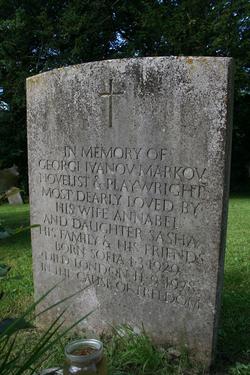
What A Tangled Web
So you thought the plot of Georgi Markov's assassination ended with his story? Well as you can see Georgi's death was as big as his life. Both in life and in death Georgi Markov stood up for the truth. Showing us all just how corrupted, and dangerous his beloved country of Bulgaria had become in the height of it's communist rule.
...And why is his death still being investigated by Scotland Yard, 30 years later?
I still have so much to write about, including who may have killed Georgi Markov, Why in 1991 Bulgaria's first post-Communist President visited Georgi's grave in England, The strange resemblance of the 2006 assassination of Alexander Litvinenko and more twists yet to come.
All this is still playing out...A murder of a man, that has transformed itself from being a criminal investigation into a political issue, and a "black-eye" for one country that just can't seem to make it go away...without answering one major question.








